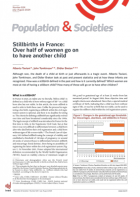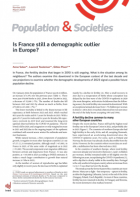The economic growth and improvements in living conditions enjoyed by Europe and North America over the last two centuries are now spreading across the planet, accompanied by a steady decline in averagefamily size. Does this mean that a country’s fertility decreases as its level of development increases?
Things are not so simple, as fertility is rising again in many highly developed countries. Angela Luci and Olivier Thévenon explain why
Fertility fell rapidly in OECD countries in the second half of the twentieth century, a period marked by continuous economic growth in these regions of the world. A trend reversal has been observed in the last decade, however, and fertility hasstarted rising again in the most developed countries against a backdrop of continued economic development. It would seem that there is no simple relationship between economic development and fertility. The trends observed in the thirty OECD countries between 1960 and 2007 show that the relationshipbetween gross domestic product (GDP) per capita and fertility,initially negative (a higher GDP is associated with lower fertility) generally turns positive once a certain development threshold has been reached (fertility increases with GDP) but this is not the case in all countries. Decomposing GDPper capita into its various components - labour productivity, working hours and employment - reveals that the rise in GDP per capita is only associated with increased fertility wheneconomic growth is linked to increased female labour forceparticipation. Enhancing the compatibility between female employment and childbearing is certainly a key factor in raising fertility levels.























